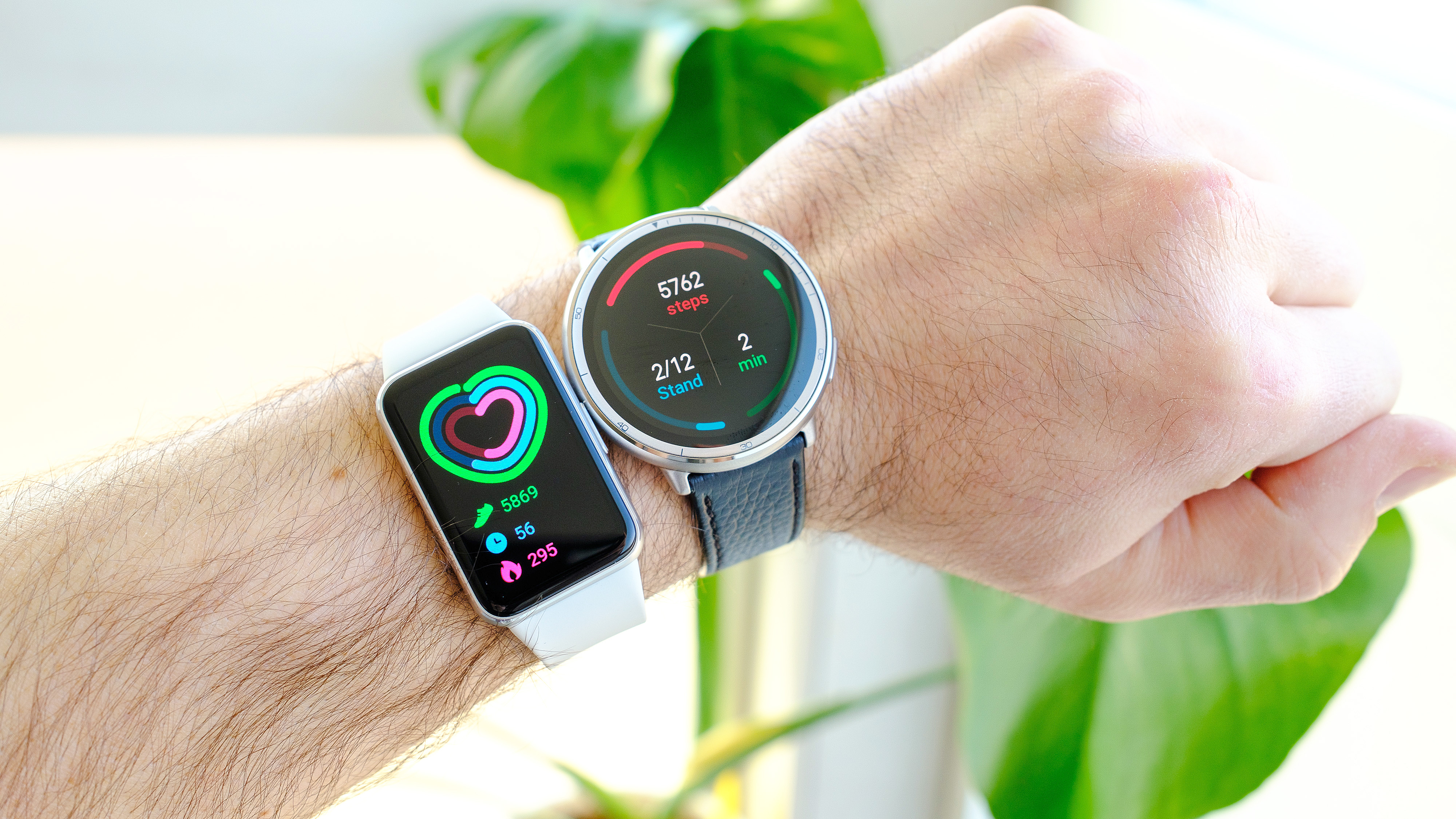
There's no need to take a hammer to your piggy bank. The Samsung Galaxy Fit3 costs just $59 and the Amazfit Active 2 starts at $99. The former launched in 2024 but recently became available in the U.S. while the latter was announced this January at CES.
We're still in the process of testing each model, so neither has quite made it into our best cheap smartwatch or best fitness tracker buying guides yet, but both make a strong case for inclusion. Why? They each boast a metal case, AMOLED touchscreen, a week-plus of battery life, detailed sleep insights, training and recovery tips and the ability to keep tabs on more than 100-plus sports and physical activities. All that for less than a Benjamin.
There are some notable differences between the two, though, outside of the obvious... one is a circle and the other is a rectangle. Beyond that, the Samsung Galaxy Fit3 is compatible with Android smartphones only. The Amazfit Active 2 plays nicely with iPhone and Android devices.
Only the Amazfit has an onboard GPS, while Galaxy Fit3 owners will need to bring their smartphone along for location tracking data. While both are reasonably lightweight and easy-wearing, the Fit3 has a noticeably brighter screen, making it easier to use on sunny days. However, the Active 2 has two physical buttons on the side of the case, which I prefer to the Samsung's one.
Finally, the Amazfit Active 2 comes in two versions. The tech is a match between them, but the standard $99 edition has a glass screen and aluminum case while the premium $129 edition boasts a tougher sapphire screen and titanium case. The latter edition also comes with both a leather and a silicone strap while the standard Amazfit only comes with the silicone.
With those key similarities and differences out of the way, you might be asking yourself, 'Which budget-friendly fitness tracker is more accurate, the Samsung Galaxy Fit3 or Amazfit Active 2?' Well, I've got answers for you, dear reader. Read on.
Samsung Galaxy Fit3 vs. Amazfit Active 2: Walk test
Taking advantage of another rare sunny day in Seattle, Washington, I tossed on my chunkiest New Balance walking shoes and more Patagonia/Arc'teryx outerwear than I care to admit (it was dang cold out), and split for the mean streets of the Emerald City, which were mostly empty save for some bundled up dog walkers and intrepid school-aged children whizzing around on scooters; I can only assume they were playing hooky. But I digress.
As always, I manually counted each step during the walk with some help from my old-school mechanical tally counter which I use to note every 100 steps taken. This makes the overall task of keeping track of my steps a whole lot easier.
I also tracked my walk using Strava on my iPhone. For reference, the Amazfit was worn on my left wrist and the Samsung on my right. Read on to see how the results from these two trackers did after 5,500 steps.
Samsung Galaxy Fit3 vs. Amazfit Active 2: Walk test results
Samsung undercounted my walk by 52 steps while Amazfit overcounted by 71 steps (Strava overcounted by 66). These are seriously impressive results well within a reasonable margin of error. Total distance data is similarly consistent across the board.
Things get a little shaky when it comes to elevation data, though. The Galaxy Fit3 has an onboard barometer so it should provide a total climb/elevation gain figure. It just doesn't. For some reason, Samsung has the device programmed to only report your minimum and maximum elevation for the workout, which isn't all that useful.
On the flip side, the Active 2 offers elevation gain data, it's just noticeably higher than what Strava recorded. From my experience, Strava's elevation data tends to be pretty darn accurate (and I didn't do that much hill climbing on this walk). So, I'm inclined (pun intended) to suspect that Amazfit exaggerated my efforts in this regard.
Moving on to pace, both the Galaxy Fit3 and Strava are programmed to pause workout tracking for momentary breaks in movement, while the Active 2 seems less inclined to do so, leading to a slower overall pace.
Heart rate data is considerably different between Samsung and Amazfit, too. However, judging from previous walk tests of similar effort, the Galaxy Fit3's tally seems likely more accurate than the Active 2's. For example, when I walked 5,500 steps with the Apple Watch 10 vs. Google Pixel Watch 3 (note: not the exact same route) the max heart rates were 160 bpm and 134 bpm, respectively, and the average heart rates were 115 bpm and 110 bpm.
Finally, the Active 2 calculated more calories burned, which is a bit odd, given the device found my overall workout less strenuous than the Galaxy Fit3.
Samsung Galaxy Fit3 vs. Amazfit Active 2: and the winner is...
Ultimately, with a total step count that's 19 steps closer to my actual count, of 5,500 steps, the Samsung Galaxy Fit3 comes out victorious against the Amazfit Active 2 in this fitness-tacking accuracy showdown. This is Samsung's second walk-test victory in less than a week; the Galaxy Fit3 defeated the Fitbit Inspire 3 during a recent 6,500-step showdown.
But, back to this battle, as there are caveats. Both of these devices logged remarkably accurate step count and distance data. But, neither provided particularly useful (Samsung) or seemingly accurate (Amazfit) elevation data.
The Amazfit Active 2's heart rate data also seems off, but more testing is needed to confirm whether or not it was a fluke this time around. On that subject: I'm in the process of reviewing both of these devices as we speak, so stay tuned, for further analysis soon.







